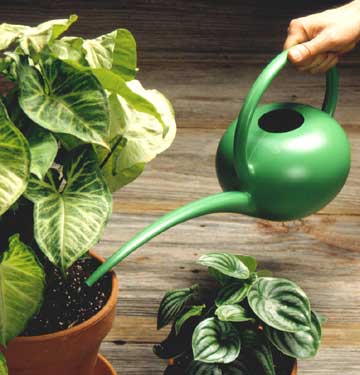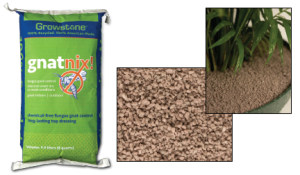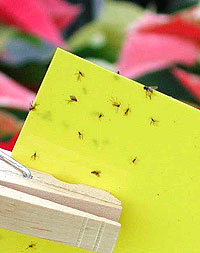Controlling Fungus Gnats in Houseplants
Controlling Fungus Gnats in Houseplants
Fungus gnats are a common problem in houseplants, especially in the winter. These are the pesky little brownish-gray gnats that look similar to mosquitoes and are often confused with fruit flies. They normally rest on the soil or plant leaves, but will fly about when disturbed.
 Fungus gnats are attracted to fungus that grows in the soil of houseplants. They lay their eggs in the damp soil of the plants, especially those that have been overwatered. When the eggs hatch, the immature gnats feed on decomposing organic matter in the soil. Gnat larvae feed on the roots and root hairs of the plants. A light infestation is more of a nuisance than a real problem, but a severe infestation can cause damage and even death to the plant. They are most harmful to small plants, but can even damage large plants if the gnat population is large enough.
Fungus gnats are attracted to fungus that grows in the soil of houseplants. They lay their eggs in the damp soil of the plants, especially those that have been overwatered. When the eggs hatch, the immature gnats feed on decomposing organic matter in the soil. Gnat larvae feed on the roots and root hairs of the plants. A light infestation is more of a nuisance than a real problem, but a severe infestation can cause damage and even death to the plant. They are most harmful to small plants, but can even damage large plants if the gnat population is large enough.
As plant lovers sometimes we have a tendency to love our plants too much, and we overwater them, keeping the soil continually wet. Houseplant soils are usually high in organic matter, and this combination of moisture and organic matter is a perfect invitation for fungi to grow. Allowing the soils in these pots to dry out on a regular basis is not only a good way to prevent the growth of fungi and fungus gnats, but it will also be better for the plants themselves.
To prevent fungus gnats wait until the surface of the soil is completely dry before watering. The larvae of the fungus gnat cannot survive in dry soil. The adult gnats can be removed with a vacuum cleaner from windows and from around the plants.
 A new product called Gnat Nix! has been shown in university tests to be very effective, also. It is made from 100% recycled glass, is non-toxic and chemical free. As a top dressing on the soil it creates a physical barrier against fungus gnats. Gnat Nix! prevents adult emergence from hatching larvae and deters females from laying eggs in the soil. As a result, the lifecycle of fungus gnats is interrupted, and its population significantly reduced. Simply apply a 1/2″- 3/4″ thick layer of Gnat Nix! top dressing to completely cover the surface of the soil. That’s it!
A new product called Gnat Nix! has been shown in university tests to be very effective, also. It is made from 100% recycled glass, is non-toxic and chemical free. As a top dressing on the soil it creates a physical barrier against fungus gnats. Gnat Nix! prevents adult emergence from hatching larvae and deters females from laying eggs in the soil. As a result, the lifecycle of fungus gnats is interrupted, and its population significantly reduced. Simply apply a 1/2″- 3/4″ thick layer of Gnat Nix! top dressing to completely cover the surface of the soil. That’s it!
You can also purchase yellow sticky cards for indoor insect control, these will work with fungus gnats. The yellow color attracts the gnats and when they come to investigate, they will stick to the sticky substance on the card. You can also make your own. Just cover bright yellow index cards with Vaseline or honey. Tape the card to a straw or chopstick and stick into the soil.
In cases of sever infestation we recommend spraying Fertilome Triple Action on the foliage as well as the soil at 5-7 day intervals for at least 3 weeks. This is an organic spray containing oil from the Neem tree. You can supplement that by dusting the soil with Dipel (BT) powder, an organic product that kills the larvae.



